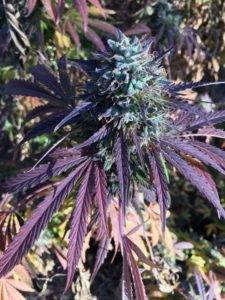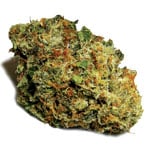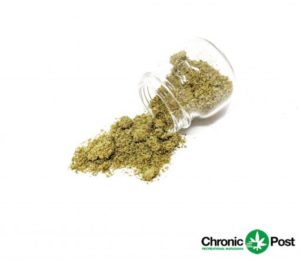
As the leading law enforcement voice for the anti-Measure 91 campaign to legalize marijuana in Oregon, Clatsop County District Attorney Josh Marquis is tasked with delivering half-truths, distortions, and manufactured scares to convince Oregonians to maintain the status quo of ticketing pot users, arresting pot dealers, and imprisoning pot growers.
In one of his recent Facebook posts, Marquis warns about the impending doom of Stoned Mayhem on the Freeways if Oregon passes Measure 91:
As a DA I see too much damage done by drugs and alcohol -particularly mixed with driving. In Clatsop County there are only 2 trained DRE (drug recognition experts) cops and no real test that scientifically shows impairment by pot (many commenters claim it makes them BETTER driver ?!?)
Yesterday in Part III, I showed you how Oregon, Colorado, and Washington roads are safer than the national average, despite being three states with legalization or contemplating legalization, three states always among the tops nationally for marijuana consumption. Today I tackle Marquis’s lament that there is no “real test” for marijuana impairment.
Marquis complains that his county only has two officers trained as drug recognition experts (DREs) and no real breathalyzer-like test for measuring marijuana impairment. Then in the same post he complains that state and local police will receive “nothing” in marijuana tax revenue, implying there will be no way to train police to recognize the new menace of stoned drivers. But as I pointed out in Part I, the average county could reap $43,000 a year in marijuana tax revenue. How much does the 2014 Oregon Drug Recognition Expert School cost per officer attending?
Marquis, like other district attorneys and, frankly, most anybody else, likes things that make his job easier. Before the days of the 0.08 blood-alcohol content (BAC) limit for DUI, prosecutors like Marquis would have to submit evidence in court to prove that a driver was, in fact, too impaired to operate a motor vehicle safely. That meant dash cam evidence, sobriety test evidence, officer testimony, alcohol on the breath, accident report, and so on. But with the 0.08 BAC, Josh Marquis only needs a number >=0.08 on the lab report from the police submitting a driver’s breathalyzer result to secure a conviction. That driver could have been obeying every law, operating his vehicle perfectly, and passing the “touch your nose and walk the line” test with flying colors, but his blood alone will earn a DUI.
Prosecutors nationwide are clamoring for something similar with marijuana. In Washington and Colorado, they created a 5 nanograms of THC per milliliter of blood limit, what we call a 5ng THC limit. No evidence of the driver’s impairment is necessary. A driver could be sitting still in rush hour traffic, and then bumped into by another car, and the motionless driver could get a DUI conviction for having 5ng of THC in his blood, regardless of how unimpaired he may be.
The problem with marijuana is that the driver at 5ng may likely be unimpaired enough to drive a car. With alcohol, there is a ton of science to show that just about everyone, aside from perhaps an obese alcoholic, is going to be demonstrably impaired at 0.08 BAC. But marijuana ain’t alcohol; it doesn’t metabolize in an even fashion like alcohol does. Marijuana can be detectable in one’s blood long after the impairing effects dissipate, even after a night’s sleep and driving sober to work in the morning. Worse, this lingering THC in the blood is more likely for frequent users, like medical marijuana patients.
So shouldn’t we bust people who are using marijuana so frequently it is still in their blood? No, because in addition to the lingering effect of THC, there is also a tolerance to its impairing effects developed by frequent users. That means the newbie who smokes his first joint the day pot is legalized would probably be too high to drive at 5ng, but the sixteen-year medical marijuana patient probably wakes up at over 5ng and probably drives just fine at levels far above 5ng.
A reporter from Washington’s KIRO decided to test this himself. He brought a medical user, a recreational user, and an occasional user of marijuana to a test track. They all consumed marijuana and headed out to the track with a driving instructor in the car and a DRE cop watching from the sidelines. Jeff, the occasional user, was still driving fine at over 20ng according to the instructor and DRE cop. Dylan, the recreational user, was fine at over 25ng. Addy, the medical marijuana patient, got up to 56ng before the cop said her driving was “borderline”. (Addy could have gotten a DUI when she drove to the test, because she was already at 16ng.)
Legalization doesn’t invent cars and marijuana – if we were going to see Stoned Mayhem on the Freeways, with 11% of Oregonians using marijuana on a monthly basis, we’d have seen it by now. Still, Measure 91 directs the Oregon Liquor Control Commission to study the science on marijuana impaired driving and make recommendations to the legislature if any changes need to be made. Measure 91 also sends money to law enforcement that they can use to train more DRE cops. Until science shows a reliable test that only snares pot-impaired drivers and not unimpaired drivers who happen to be pot smokers, Marquis is just asking for an easier way to discriminate against legal cannabis consumers.
























